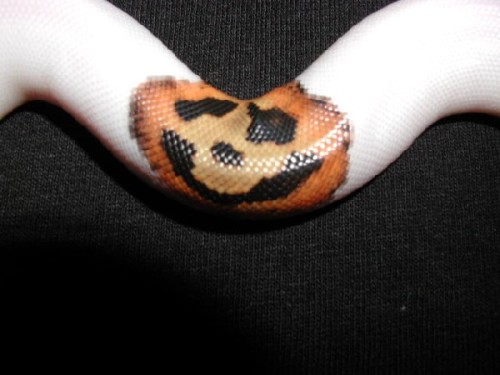The Flames On Our Banner Have Forged New Blades.





The flames on our banner have forged new blades. Bigger and stronger, we’re cubs no longer.
WE’RE WOLVES OF THE NORTH
Wolves of the North — Karliene
More Posts from Doodleglop and Others
Two ingredients cake 😱 📷: @buzzfeedtasty
oh my god last thing i swear but something else I love is how fucking dramatic and Extra™ the Starklings all are.
Jon is just out there clanging the bells, doing his whole speech any time someone even remotely mentions “winter”. “It’s a little chilly in here” everyone within a 5 mile radius groans because then comes Jon Snow bounding into the room like “heard you were cold. It may be because it’s winter. Winter is here. The long night is coming. The darkness is coming for us all. Enemies surround us,” he really might as well start wearing an apocalypse sign and invest in a megaphone
And then Sansa???? Homegirl really pulls out Arya and makes a big deal of making it looking like she’s gonna kill her and then she pauses and goes “Lord Baelish” I bet she mentally thought “fuck yeah” when she saw his face she deserves like 10 Oscars for playing him girl’s been planning his death ever since he sold her out to the Boltons lmao
And A r y a lmao look at her going really big into Creep Mode to fool Baelish too. “Hey Arya we kind of need to figure out how to trick Baelish maybe we can-” “Say no more I’ll threaten you in private, want me to caress your face with a knife or something?” “well you don’t need to be so hardcore about it maybe just-” “no, no, anyway, go to my room tonight and look into my bag that totally doesn’t have faces in it, wink wink.” And even besides that we got our girl being such a grudge holder that she repeats her list of names to kill each night and tells the people she wants to kill that they’re on her list
And hooooooooooooooo my god Bran. At this point I’m just headcanoning that he’s intentionally fucking with people. Gives Arya the dagger and doesn’t tell her what to do with it yet because he lives for the #drama of it all. He sets the drama in motion, takes time out of his day to interrupt conversations with random receipts just to watch people freak the fuck out, will have a 30 minute spiel on how he can see literally everything only to go “lol nah man chill i just googled it” when someone asks how he knew something




Cologne Cathedral, Germany. Construction began in 1248, was halted around 1560, restarted in 1814 and was completed to its original medieval plan in 1880. The builders in the 14th century created a pastel light effect that remained unique among medieval churches. It is preserved in the cathedral choir to this day. The oldest window dates back to the 13th century, the most recent window was created in 2007 by Gerhard Richter. Source





Azuma Makoto, a 38-year-old artist based in Tokyo, launched two botanical arrangements into orbit: “Shiki 1,” a Japanese white pine bonsai tree suspended from a metal frame, and an untitled arrangement of orchids, lilies, hydrangeas, and irises.
Eclipse 2017: A Unique Chance for Science
On Aug. 21, the Moon will cast its shadow down on Earth, giving all of North America the chance to see a solar eclipse. Within the narrow, 60- to 70-mile-wide band stretching from Oregon to South Carolina called the path of totality, the Moon will completely block out the Sun’s face; elsewhere in North America, the Moon will cover only a part of the star, leaving a crescent-shaped Sun visible in the sky.

Find eclipse times for your location with our interactive version of this map.
A total solar eclipse happens somewhere on Earth about once every 18 months. But because Earth’s surface is mostly ocean, most eclipses are visible over land for only a short time, if at all. The Aug. 21 total solar eclipse is different – its path stretches over land for nearly 90 minutes, giving scientists an unprecedented opportunity to make scientific measurements from the ground.
No matter where you are, it is never safe to look directly at the partially eclipsed or uneclipsed Sun. Make sure you’re prepared to watch safely, whether that’s with solar viewing glasses, a homemade pinhole projector, or online with us at nasa.gov/eclipselive.

Within the path of totality, the Moon will completely obscure the Sun’s face for up to 2 minutes and 40 seconds, depending on location. This will give people within the path of totality a glimpse of the innermost reaches of the Sun’s corona, the outer region of the atmosphere that is thought to house the processes that kick-start much of the space weather that can influence Earth, as well as heating the whole corona to extraordinarily high temperatures.
In fact, scientists got their first hint at these unusually high temperatures during the total solar eclipse of 1869, when instruments detected unexpected light emission. It was later discovered that this emission happens when iron is stripped of its electrons at extremely high temperatures.
This region of the Sun’s atmosphere can’t be measured at any other time, as human-made instruments that create artificial eclipses must block out much of the Sun’s atmosphere – as well as its bright face – in order to produce clear images.

We’re funding six science investigations to study the Sun’s processes on Aug. 21. Teams will spread out across the path of totality, focusing their instruments on the Sun’s atmosphere. One team will use a pair of retro-fitted WB-57F jets to chase the Moon’s shadow across the eastern US, extending the time of totality to more than 7 minutes combined, up from the 2 minutes and 40 seconds possible on the ground.
Our scientists are also using the Aug. 21 eclipse as a natural science experiment to study how Earth’s atmosphere reacts to the sudden loss of solar radiation within the Moon’s shadow.

One region of interest is Earth’s ionosphere. Stretching from roughly 50 to 400 miles above Earth’s surface, the tenuous ionosphere is an electrified layer of the atmosphere that reacts to changes from both Earth below and space above and can interfere with communication and navigation signals.

The ionosphere is created by ionizing radiation from the Sun. When totality hits on Aug. 21, we’ll know exactly how much solar radiation is blocked, the area of land it’s blocked over and for how long. Combined with measurements of the ionosphere during the eclipse, we’ll have information on both the solar input and corresponding ionosphere response, enabling us to study the mechanisms underlying ionospheric changes better than ever before.
The eclipse is also a chance for us to study Earth’s energy system, which is in a constant dance to maintain a balance between incoming radiation from the Sun and outgoing radiation from Earth to space, called the energy budget. Like a giant cloud, the Moon during the 2017 total solar eclipse will cast a large shadow across a swath of the United States.

Our scientists already know the dimensions and light-blocking properties of the Moon, and will use ground and space instruments to learn how this large shadow affects the amount of sunlight reaching Earth’s surface, especially around the edges of the shadow. This will help develop new calculations that improve our estimates of the amount of solar energy reaching the ground, and our understanding of one of the key players in regulating Earth’s energy system — clouds.
Learn all about the Aug. 21 eclipse at eclipse2017.nasa.gov, and follow @NASASun on Twitter and NASA Sun Science on Facebook for more. Watch the eclipse through the eyes of NASA at nasa.gov/eclipselive starting at 12 PM ET on Aug. 21.
Make sure to follow us on Tumblr for your regular dose of space: http://nasa.tumblr.com




Full 6.05 Recap / reddit / patreon / requests for individuals
Need!!
Literally me
Wait. Can't walk. Don't you see. Repeat. (via)
-
 maerysworld liked this · 4 years ago
maerysworld liked this · 4 years ago -
 mywinterivy liked this · 5 years ago
mywinterivy liked this · 5 years ago -
 itwillbesosweet-jonsa reblogged this · 5 years ago
itwillbesosweet-jonsa reblogged this · 5 years ago -
 itwillbesosweet-jonsa liked this · 5 years ago
itwillbesosweet-jonsa liked this · 5 years ago -
 itwillbesosweet-jonsa reblogged this · 5 years ago
itwillbesosweet-jonsa reblogged this · 5 years ago -
 winterequinoxx liked this · 6 years ago
winterequinoxx liked this · 6 years ago -
 drachenjaegers reblogged this · 6 years ago
drachenjaegers reblogged this · 6 years ago -
 not-a-princess-but-a-queen liked this · 6 years ago
not-a-princess-but-a-queen liked this · 6 years ago -
 nektariagk liked this · 6 years ago
nektariagk liked this · 6 years ago -
 markslaughtershands liked this · 6 years ago
markslaughtershands liked this · 6 years ago -
 dashingdetectivetimelady reblogged this · 6 years ago
dashingdetectivetimelady reblogged this · 6 years ago -
 dashingdetectivetimelady liked this · 6 years ago
dashingdetectivetimelady liked this · 6 years ago -
 pykraken-archive liked this · 6 years ago
pykraken-archive liked this · 6 years ago -
 littlebirdisms-blog reblogged this · 6 years ago
littlebirdisms-blog reblogged this · 6 years ago -
 annys119 liked this · 6 years ago
annys119 liked this · 6 years ago -
 soyunapapa liked this · 6 years ago
soyunapapa liked this · 6 years ago -
 thescarredhorn reblogged this · 6 years ago
thescarredhorn reblogged this · 6 years ago -
 cheshiregrave liked this · 6 years ago
cheshiregrave liked this · 6 years ago -
 ladlithui liked this · 7 years ago
ladlithui liked this · 7 years ago -
 red-violator reblogged this · 7 years ago
red-violator reblogged this · 7 years ago -
 red-violator liked this · 7 years ago
red-violator liked this · 7 years ago -
 sandushengshou reblogged this · 7 years ago
sandushengshou reblogged this · 7 years ago -
 im-no-maiden-moved-blog liked this · 7 years ago
im-no-maiden-moved-blog liked this · 7 years ago -
 gifweekend reblogged this · 7 years ago
gifweekend reblogged this · 7 years ago -
 katiegkoolgeek reblogged this · 7 years ago
katiegkoolgeek reblogged this · 7 years ago -
 katiegkoolgeek liked this · 7 years ago
katiegkoolgeek liked this · 7 years ago -
 mrsrobinsong reblogged this · 7 years ago
mrsrobinsong reblogged this · 7 years ago -
 gibby-cunter reblogged this · 7 years ago
gibby-cunter reblogged this · 7 years ago -
 gibby-cunter liked this · 7 years ago
gibby-cunter liked this · 7 years ago -
 weirwoods reblogged this · 7 years ago
weirwoods reblogged this · 7 years ago -
 queenoftheseven reblogged this · 7 years ago
queenoftheseven reblogged this · 7 years ago -
 honeybutterchickenbitches reblogged this · 7 years ago
honeybutterchickenbitches reblogged this · 7 years ago -
 honeybutterchickenbitches liked this · 7 years ago
honeybutterchickenbitches liked this · 7 years ago -
 fleabottom reblogged this · 7 years ago
fleabottom reblogged this · 7 years ago -
 arya-durin-51 reblogged this · 7 years ago
arya-durin-51 reblogged this · 7 years ago -
 arya-durin-51 liked this · 7 years ago
arya-durin-51 liked this · 7 years ago -
 nessanightray reblogged this · 7 years ago
nessanightray reblogged this · 7 years ago -
 zapha liked this · 7 years ago
zapha liked this · 7 years ago -
 the-un-brokenteacup-blog liked this · 7 years ago
the-un-brokenteacup-blog liked this · 7 years ago -
 lovely-skele-puns liked this · 7 years ago
lovely-skele-puns liked this · 7 years ago -
 its-purplepurple liked this · 7 years ago
its-purplepurple liked this · 7 years ago -
 dancingbibliophile4 reblogged this · 7 years ago
dancingbibliophile4 reblogged this · 7 years ago -
 aillba liked this · 7 years ago
aillba liked this · 7 years ago -
 lesenfantsdecain reblogged this · 7 years ago
lesenfantsdecain reblogged this · 7 years ago -
 aegon-targaryen reblogged this · 7 years ago
aegon-targaryen reblogged this · 7 years ago -
 jayne-snow reblogged this · 7 years ago
jayne-snow reblogged this · 7 years ago -
 alreadycursedbcawinchester liked this · 7 years ago
alreadycursedbcawinchester liked this · 7 years ago